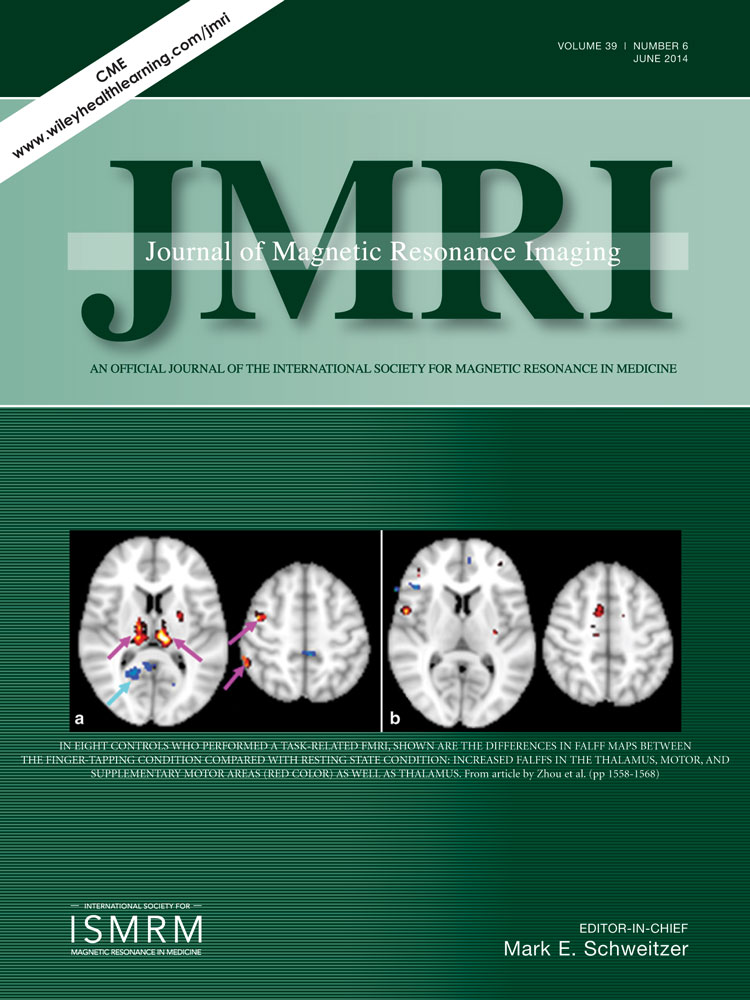Early extremity MRI findings and pathological synovial changes in antigen-induced arthritis rabbit model
Abstract
Purpose
To investigate the association between early extremity MRI (E-MRI) findings and synovial pathological changes in antigen-induced arthritis (AIA) rabbit model.
Materials and Methods
AIA was successfully induced in the right knee of 32 sensitized Japanese white rabbits, which were then divided into four groups according to the time of killing after AIA induction: 1-week (Group A), 2-weeks (Group B), 3-weeks (Group C), and 4-weeks (Group D); the left knee served as control in each rabbit.
Results
There were varying degrees of joint effusion in all AIA groups. E-MRI scan showed low signal in T1-weighted images (T1Wi) and high signal in T2-weighted images (T2Wi). Enhanced E-MRI revealed elevated synovial signal at the right knee in the three-dimensional spoiled gradient T1WI, showing linear and band-shaped, diffuse hyperintensity. Histological examination of right knees found scattered inflammatory cell infiltration, swelling, and proliferation of the synovial cells at 7 days after AIA induction and dispersed and disordered proliferation of synovial cells up to 3 layers at 28 days postinduction. The synovial enhancement of right knee E-MRI was consistent with a synovial pathology score for all rabbits (Kappa = 0.965, P < 0.01).
Conclusion
E-MRI can reveal the degree of changes in the joints and synovium at different periods of the AIA model. J. Magn. Reson. Imaging 2014;39:1366–1373. © 2013 Wiley Periodicals, Inc.




